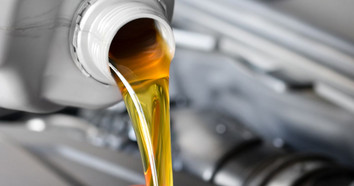All kinds of machinery, from manufacturing to food service to aerospace, requires lubrication. Since the use of modern machinery began, lubricants derived from petroleum have been the industry standard. But as oil prices rise, so do the costs associated with oil-derived lubricants.
As prices have risen, a parallel concern has come to the fore in industries—that of environmental responsibility. The lubrication industry has responded by formulating new lubricants labeled as biodegradable. But what exactly is a biodegradable industrial lubricant?
Defining Biodegradable
Something is biodegradable if it breaks down naturally through the action of bacteria, fungi, or other living organisms. These organisms take a biodegradable substance and break it down into simpler elements, like water or carbon dioxide, or naturally occurring minerals, blending back into the earth without leaving toxic substances behind.
The Difference Between Biodegradable and Readily Biodegradable
Many substances are biodegradable—eventually. Petroleum, for example, is a naturally occurring substance that will break down. It is therefore called “inherently biodegradable.”
But inherently biodegradable isn’t good enough to meet environmental standards. A substance must degrade by 60% in 28 days to earn the label “readily biodegradable.” This standard has been established in International Organization for Standardization (“ISO”) standard 9439 and Organization for Economic Cooperation and Development (“OECD”) standard 301B. Petroleum comes in much lower than that, with 15 to 35% degradation in 28 days.
Toxicity
Another important measure of biodegradability is toxicity. The more additives a product has, the more likely it is to have increased toxicity levels. Some industrial lubricants require additives to perform their function effectively, but to be truly environmentally friendly, biodegradable industrial lubricants must not contain toxic additives, including heavy metals like zinc.
Check labels to determine if a biodegradable lubricant you are considering has been tested for toxicity in environments like the one where you’ll be working. Marine environments are particularly sensitive, and marine applications are subject to stringent regulations about lubricants to limit harmful leaks.
So, What Exactly Is a Biodegradable Industrial Lubricant?
Biodegradable lubricants are those made with vegetable oils like soybean, olive, canola, cottonseed, or sunflower. Manufacturers may use synthetic esters or other substances to mix with the vegetable oil to increase its effectiveness as a lubricant. Polyalkylene glycols (PAGs) may also be used as a base, but these can be problematic, as they won’t mix with other oils and can react badly with paint and seals.
Although valued for their viscosity and high flash points, vegetable oils can oxidize quickly. Oxidation causes these oils to thicken into greasy solids, reducing or destroying their efficacy as lubricants. Farmers are working on genetically engineered crops that can produce oils that don’t require as much antioxidant to be effective.
Biodegradable lubricants are growing in popularity, and the diversity of the supply is increasing. Now that you know more about biodegradable industrial lubricants, contact Santie Oil for information on our stock of biodegradable lubricants that may meet your needs.

